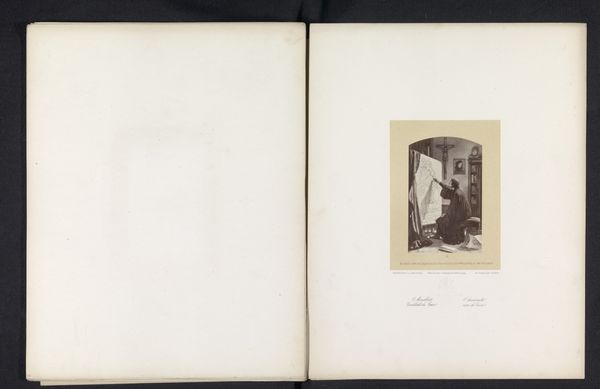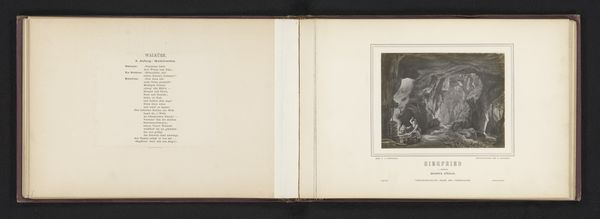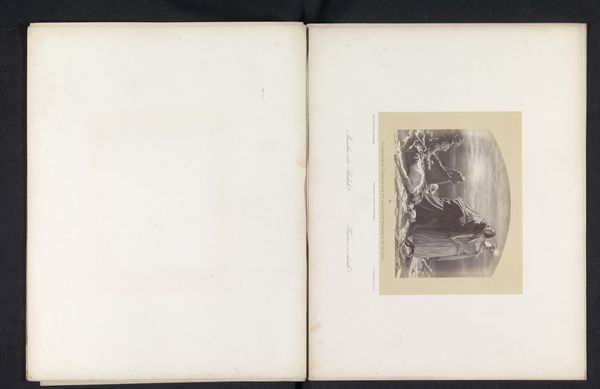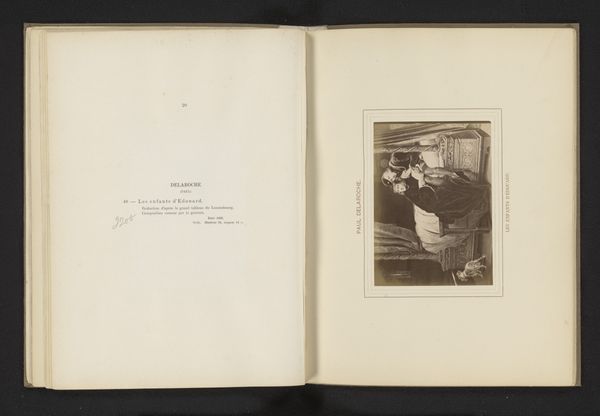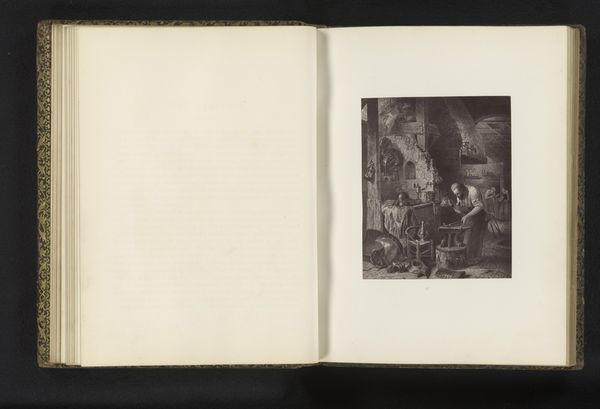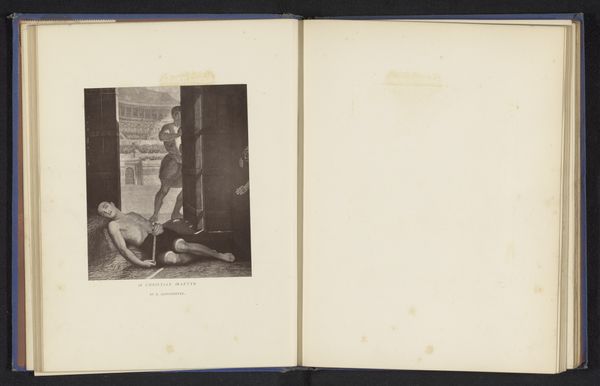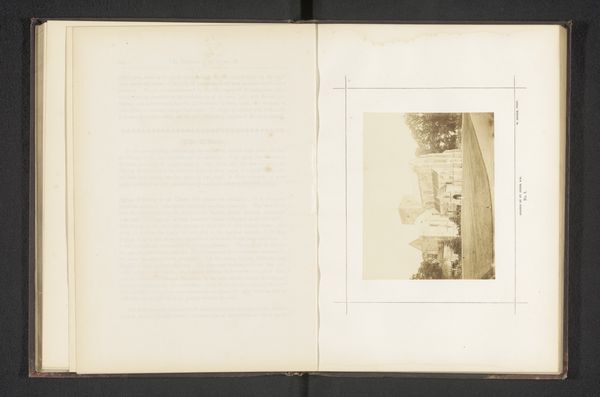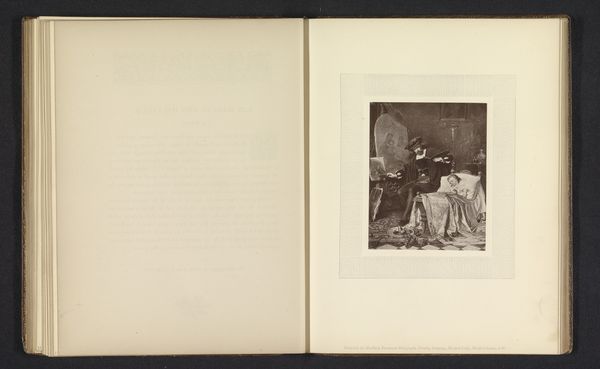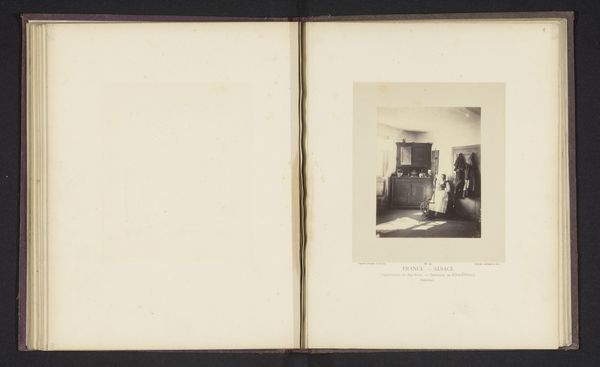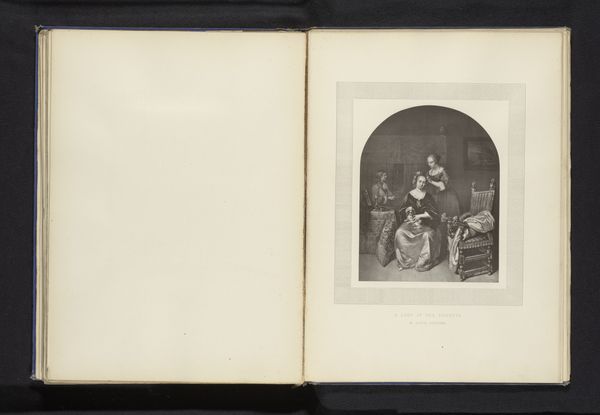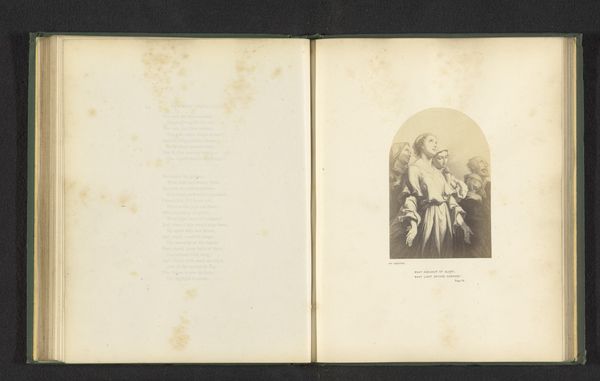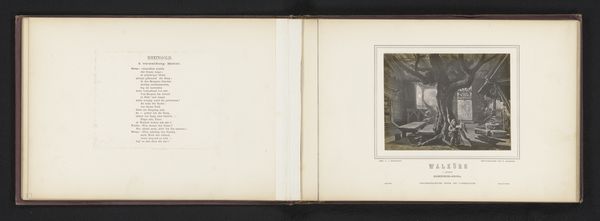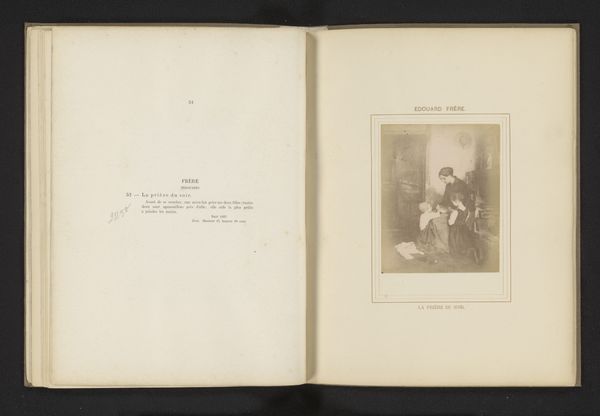
Reproductie van een prent van de wegzending van Hagar en Ismaël door Eduard Ens naar Adriaen van der Werff before 1875
0:00
0:00
print, engraving
#
portrait
#
narrative-art
#
dutch-golden-age
# print
#
engraving
Dimensions: height 190 mm, width 147 mm
Copyright: Rijks Museum: Open Domain
Editor: This is a reproduction of a print by Eduard Ens, dating from before 1875, based on a work by Adriaen van der Werff. It depicts "The Dismissal of Hagar and Ishmael," and it's striking how the engraving focuses on the interplay of light and shadow to create such a somber, intimate scene. What do you see in this piece that particularly stands out to you? Curator: From a formalist perspective, the print’s value lies primarily in its arrangement of visual elements. Consider how the window acts as a structural grid, subtly contrasted with the fluid draping of the curtain. The textures, though monochromatic, reveal the engraver's technical skill, don't they? Editor: They do. The contrast is pretty effective, like a visual metaphor. I'm curious, though—does knowing the narrative of Hagar and Ishmael influence your interpretation, or do you mainly stick with visual components? Curator: While the narrative is unavoidable, my interest lies in how the artist manipulates visual forms to convey that narrative. Observe the way the engraver positions the figures: the stooping posture of Hagar, and the small body of the son create compositional balance. What is emphasized is not necessarily what they do, but the structural role that they assume. Editor: That's a very interesting way to think about it, focusing on the compositional architecture as its own language. I never really considered analyzing a narrative scene this way before, completely separating form and content. Curator: Indeed. This methodology allows for appreciation of form without being overly burdened by context, or subject. Though I must concede that these two modes can mutually enhance each other. What began as simply composition will reveal complex arrangements. Editor: I guess by concentrating on pure form, you notice so much about structure that might go unnoticed if you fixated on story or history alone. Thanks, this was super helpful. Curator: Likewise, these conversations sharpen the eye. A productive exercise!
Comments
No comments
Be the first to comment and join the conversation on the ultimate creative platform.
